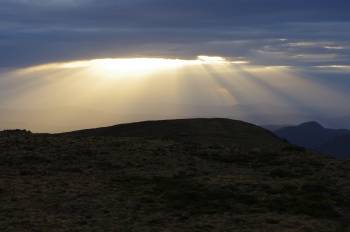We have known for years that climate change is reducing the overall amount of snow we receive in Australia. The snow pack has been in decline since at least 1957. We also know that the loss of snow is being felt especially at lower elevations and will have enormous impacts on the local economies that have developed around the mountains.
Today Protect Our Winters (POW) have released a comprehensive update on the threats posed by climate change – to snow pack, the mountain environment and animals who rely on a thriving ecosystem, and downstream rivers, and also the impacts on the local economies that rely on good snowfalls.
POW say:
‘This report, titled Our Changing Snowscapes: Climate Change Impacts and Recommendations for the Australian Alps developed by the Australian Mountain Research Facility and ANU, commissioned by Protect Our Winters Australia, reviews the current state of climate change impacts on the Australian Alps and puts forward recommendations for a better path forward. POW Australia commissioned this report as we found that the information on climate impacts in the Australian Alps was fragmented and outdated, with significant focus on snowfall and ecological impacts, and limited research on the social and economic consequences of climate change.
Some of the key findings are:
The impact of climate change on temperature, precipitation, and snow conditions in the Australian Alps is stark and has been heralded for more than three decades. In 1988, Galloway et al. predicted that climate change will drastically impact the Australian Alps, and that even small temperature increases would have a catastrophic impact on the Australian winter tourism industry. The Australian snowpack is now at a 2,000-year low. Snow cover between 1954 and 2012 has reduced by 30% and the length of the ski season has already contracted by 17% – 28% across most Australian alpine resorts. Businesses and regional communities at present are experiencing the impacts of climate change and these impacts are projected to worsen rapidly without decisive climate mitigation.
Reading the report
To make the report more approachable for the community and the general public, POW has broken it down into individual sections so people can investigate the areas that are of greatest interest to them. Check here to find a link to each section.
- climate projections
- impacts on alpine tourism
- impacts on regional communities
- impacts on hydro electricity production and downstream impacts in the Murray Darling Basin
- carbon sequestration
- impacts on alpine ecology
- First Nations
The report has updated likely impacts on ski resorts (with obvious implications for tourism and local economies). For the first time the SkiSim2 model has been to applied to Australia’s resorts – predicting season length at Thredbo, Perisher, Falls Creek, Mt Buller, Mt Hotham, Mt Baw Baw and Lake Mountain in low, moderate and high emission scenarios in 2030, 2050 and 2080.

In broad terms,. The conclusions of the report are:
a) Climate change impacts are already driving autonomous adaptation measures in the environment and by industries across the Australian Alps;
b) Some impacts can be mitigated by restoring environmental health of high country ecosystems, including by enhanced programs for control of weeds and feral animals, and peat bog restoration;
c) Many high country species of flora and fauna are at risk of extinction and require consideration of translocation and ex-situ conservation;
d) Climate change is driving expansion of new adaptions in industries, such as development of more mountain biking and pumped storage hydropower facilities, and informed discussion is required to manage environmental and other trade-offs.
The report also delves into
- Decision making about climate and the Alps
- Mitigation and adaptation strategies
Threats to snow gums
Mountain Journal and Friends of the Earth have worked for several years to raise awareness of the threat posed by climate change driven fire regimes to snow gums and alpine ash forests. This threat is covered in the High Country section of the report.
‘Climate change impacts are projected to worsen, threatening the extinction of unique species and causing ecological transformation.
Bushfires will become more frequent and severe due to increased temperatures, reduced precipitation, and changes in vegetation. Bindoff et al. (2016) project that under a high emission scenario by 2100 ‘Total Fire Ban’ conditions will have increased by at least 75% and four times as much fire suppression work will be required.
In the case of snow gums, the report has a specific warning: ‘the increasing frequency of bushfires is resulting in an abrupt decline for the species.’.
The report makes the following recommendation relating to snow gums:
Adapting fire management practices, such as by protecting long-unburnt sites from fire and managing a transition to larger portions of the forest being in a long-unburnt state
Further information
You can read the full POW report here.
POW is holding a online report briefing session on June 19th at 6:30PM for all interested members of the public – register your attendance here.
You can read the report An Icon at Risk: threats to the Victorian high country, produced by Friends of the Earth in 20-21 here.
Take action
You can support POW’s work with a donation here.
You can sign the letter to the Victorian government urging them to commission an investigation into the ecological health of snow gums here.
You can read more about how we can protect snow gum woodlands here.
























































Leave a comment